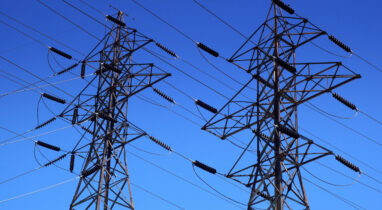Next week, Canadian households will begin receiving carbon tax rebate payments directly from the federal government for the first time.
Payments will be issued quarterly, beginning with a double payment on July 15, 2022. Previously, carbon tax rebates were issued to Canadians once a year through their income tax returns.
“The Canadian carbon tax and rebate system returns 100% of revenues back to Canadians, and leaves a majority of households financially better off,” said Clean Prosperity Executive Director Michael Bernstein.
“Lower-income Canadians benefit the most from the carbon tax rebate. That’s critically important right now, when we’re seeing big increases in the cost of living. The new rebate payment system will put money into people’s bank accounts four times a year, which will help cover rising costs.”
Direct carbon tax rebate payments will also increase the transparency of the carbon pricing system, giving Canadians a clearer understanding of how the rebate makes climate action affordable. Clean Prosperity advocated for years for this improvement to the policy.
In 2022‒23, an average four-person household will receive $745 in Ontario, $832 in Manitoba, $1,101 in Saskatchewan, and $1,079 in Alberta. Rural residents receive an extra 10% to cover their additional costs.
“Lower-income Canadians benefit the most from the carbon tax rebate. That’s critically important right now, when we’re seeing big increases in the cost of living. The new rebate payment system will put money into people’s bank accounts four times a year, which will help cover rising costs.”
Clean Prosperity Executive Director Michael Bernstein
Carbon pricing: cornerstone of climate policy
Carbon pricing is the cornerstone of Canada’s climate policy. It’s an efficient way to reduce carbon emissions and help achieve Canada’s climate targets — a 40-45% reduction in greenhouse gas emissions by 2030, and net-zero emissions by 2050. Opinion polls by Clean Prosperity and Leger consistently show that a large majority of Canadians support the net-zero target, and consider carbon pricing to be a priority in a credible climate plan.
The carbon tax and rebate system gives Canadians freedom of choice in how they reduce their emissions. Most importantly, the rebate makes climate action affordable, by returning all the proceeds to Canadians. Rather than making life more expensive, the carbon tax rebate delivers a net financial benefit to a majority of Canadians, especially to low-income Canadians who need it most.
Is carbon pricing driving big increases in energy prices?
It’s important to understand that carbon pricing is not driving the big increases in energy prices that Canadians are currently facing. Instead, these increases are largely due to geopolitical and other factors that are driving up the prices of crude oil, natural gas, and refined petroleum products all over the world. In contrast, Canada’s carbon pricing system is designed to slowly and steadily increase the cost of carbon emissions, to $170/tonne by 2030.
According to the Canadian Automobile Association, the average price of gasoline has increased from $1.35 to $1.93 per litre in the past year, an increase of $0.58. In the same period, the carbon tax on gasoline increased by a little over two cents per litre.
More work needed to improve Canada’s carbon pricing system
Canada has a world-leading carbon pricing system, and the federal government is considering changes to the policy that will make it even more effective for reducing emissions efficiently and affordably. A recent report by the Commissioner of the Environment and Sustainable Development also identified further important improvements to carbon pricing policy that are needed to make the system fairer for low-income and Indigenous Canadians.




